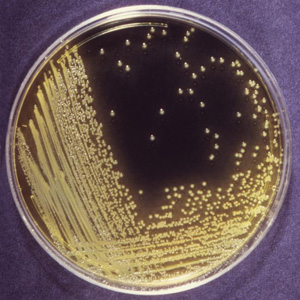Antibiotic resistance
The success of antibiotics has meant that they have been used increasingly over the last sixty years. They are not only used to treat humans, but also to treat sick animals. In the past antibiotics have been added to animal feeds to reduce infection and improve the growth of farm livestock; this use of antibiotics has been banned in the EU since 2006.
Bacteria frequently mutate and as a result strains of antibiotic-resistant bacteria have appeared. The widespread use of antibiotics has encouraged the appearance of these resistant strains of bacteria. The more often bacteria are exposed to an antibiotic, the bigger the risk that a resistant strain will evolve.
Often, after taking the antibiotics for just a few days, the symptoms of the infection can disappear. This is because the majority of the bacteria have been killed but a few will remain alive. These are the ones that have the greatest resistance to the antibiotic being used and stopping the treatment early gives them a chance to survive. They will reproduce so that the infection returns and this time all of the bacteria will be of the resistant type. These bacteria can be transmitted to others and treating the infection will require a different antibiotic.

Developing antibiotic resistance
Photo courtesy of CDC
One such antibiotic resistant superbug is called MRSA (Methicillin-resistant Staphylococcus aureus). The bacteria is sometimes found in hospitals and can infect wounds following surgery or cause pneumonia. These infections can be serious and need treating with a range of antibacterial medicines. Hospitals work hard to maintain high standards of hygiene to prevent the outbreak of MRSA infections. Disinfecting surfaces and using antiseptic hand washes and gels help to prevent the spread of these infections.
Avoiding antibiotic resistance
Antibiotic resistance
Only using antibiotics when they are absolutely necessary will help to stop the evolution of resistant strains of bacteria.
Another a simple way to reduce resistance is to make certain that any course of antibiotic treatment is completed.











